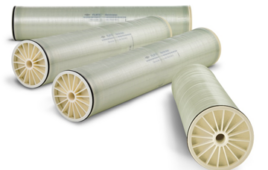New
University of Alberta research shows the first evidence that
oxygen-breathing bacteria occupied and thrived on land 100 million years
earlier than previously thought.
The researchers show the most primitive form of aerobic respiring life on land came into existence 2.48 billion years ago.
The
research team, led by U of A geomicrobiologist Kurt Konhauser made
their find by investigating a link between atmospheric oxygen levels and
rising concentrations of chromium in the rock of ancient sea beds. The
researchers suggest that the jump in chromium levels was triggered by
the land-based oxidization of the mineral pyrite.
Pyrite
oxidation is driven by bacteria and oxygen. Aerobic bacteria broke down
the pyrite, which released acid at an unprecedented scale. The acid
then dissolved rocks and soils into a cocktail of metals, including
chromium, which was transferred to the ocean by the runoff of rain
water.
Konhauser
says the key to the process is oxygen in Earth’s atmosphere that
allowed bacterial oxidation of pyrite. The researchers dated the peak
for chromium levels in marine sedimentary rock was reached 2.48 billion
years ago.
“This
gives us a new date for the Great Oxidation Event, the time when the
atmosphere first had oxygen,” says Konhauser. “The rising levels of
atmospheric oxygen fostered the evolution of new bacteria species that
survived by aerobic respiration on land.
“Our ancestors started off in an acid bath as oxygen-breathing bacteria.”
The
same bacterial life forms are alive and well today, living off pyrite
and settling in the highly acidic waste waters of mining sites the world
over.
The research by Konhauser and his team is published in Nature.
Aerobic bacterial pyrite oxidation and acid rock drainage during the Great Oxidation Event




